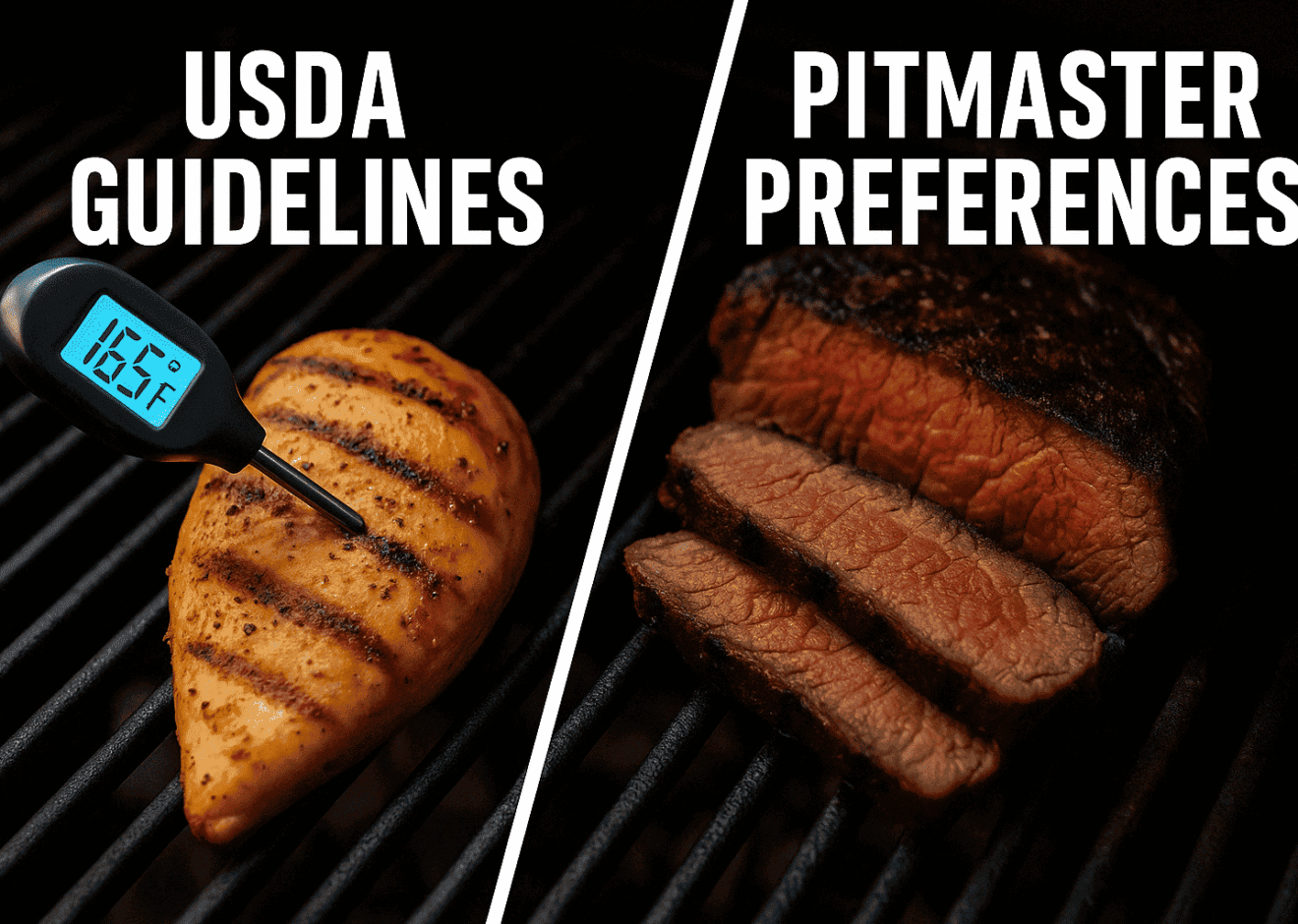
Is 165°F really the magic number? Learn the difference between USDA safe cooking temperatures and what pitmasters prefer for the perfect balance of safety and flavor.
Safety First — But Flavor Shouldn’t Suffer
When it comes to cooking meat, especially BBQ, there’s often a tension between playing it safe and nailing that perfect texture. The USDA provides safe minimum internal temperatures to prevent foodborne illness, but many pitmasters push the boundaries to get better flavor and tenderness — without compromising safety.
So, where’s the sweet spot? Let’s break it down.
USDA Recommended Safe Temperatures
These are the official guidelines — the minimum temps meat must reach to kill off harmful bacteria:
| Meat Type | USDA Safe Temp (°F) |
| Ground Meats | 160 (beef, pork, lamb) |
| Ground Poultry | 165 |
| Whole Cuts (Beef, Pork, Lamb) | 145 + 3-minute rest |
| Poultry (Whole or Parts) | 165 |
| Fish | 145 |
| Ham (Fresh) | 145 |
| Precooked Ham | 140 |
These numbers ensure food safety across the board. But here’s where it gets interesting…
Pitmaster Preferences: Going Beyond the Minimum
In the world of BBQ, hitting the USDA’s safe temperature often isn’t enough — not when you’re chasing fall-apart tenderness or a juicy bite that melts in your mouth.
Here’s what experienced BBQers go for:
| Cut | Pitmaster Target Temp | Why Go Higher? |
| Brisket | 195–205 | Collagen breaks down for tenderness |
| Pork Shoulder | 200–205 | Perfect for shredding |
| Ribs | ~200 | Bones pull clean, meat is tender |
| Chicken Breast | 160 | Juicier than 165, safe with rest |
| Steaks (Medium-Rare) | 130–135 | Flavorful and still safe |
| Turkey Breast | 160 | Prevents dryness |
The Secret: Resting Time
Pulling meat off the grill or smoker a few degrees before the final temp lets carryover cooking finish the job. This keeps meat juicy while still reaching safe temps.
When to Stick with the USDA
- For Ground Meats: Always follow USDA temps. Grinding mixes bacteria throughout the meat.
- For Poultry with Skin: Play it safe unless you’re experienced with resting temps.
- For Immune-Compromised Guests or Kids: Stick to official temps.
Final Thoughts
The USDA temps are crucial for food safety — no doubt about it. But once you understand carryover cooking, resting periods, and how meat behaves at different temps, you can cook smarter without sacrificing safety or flavor. It’s all about knowing your tools and your timing.
